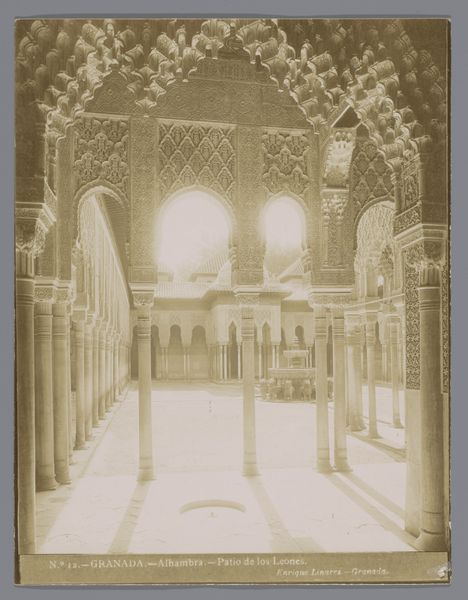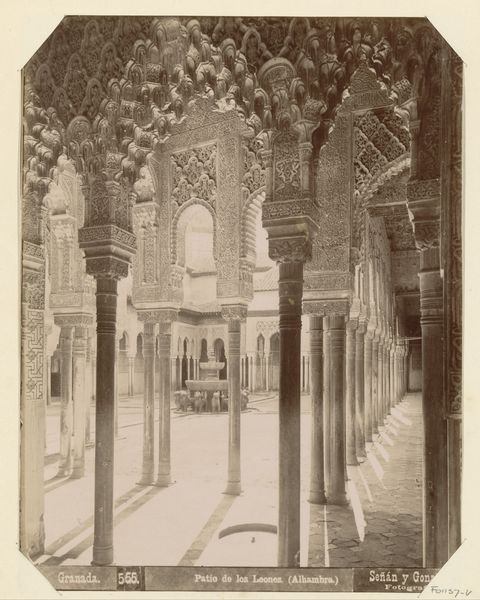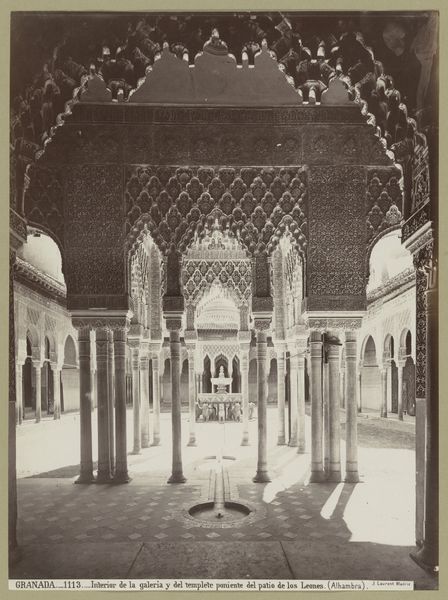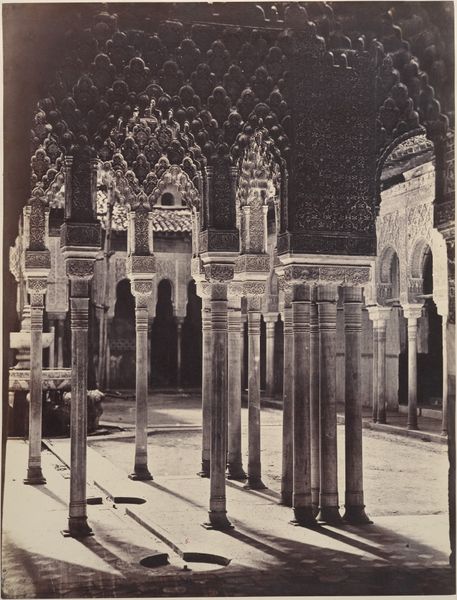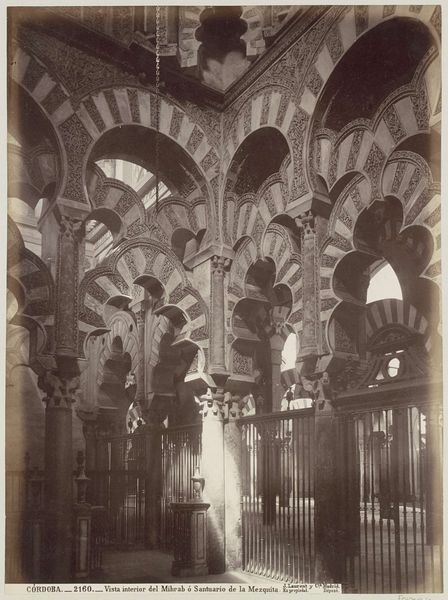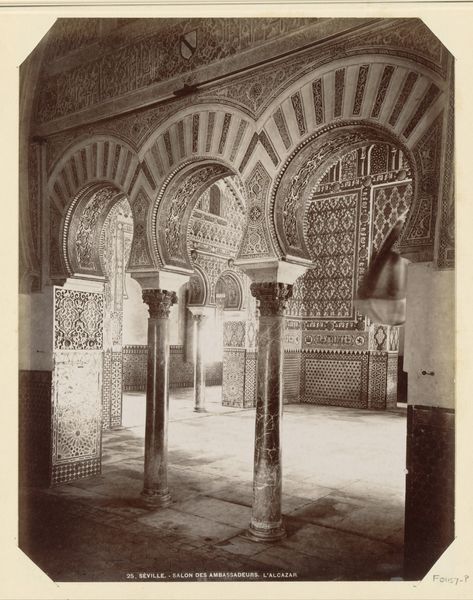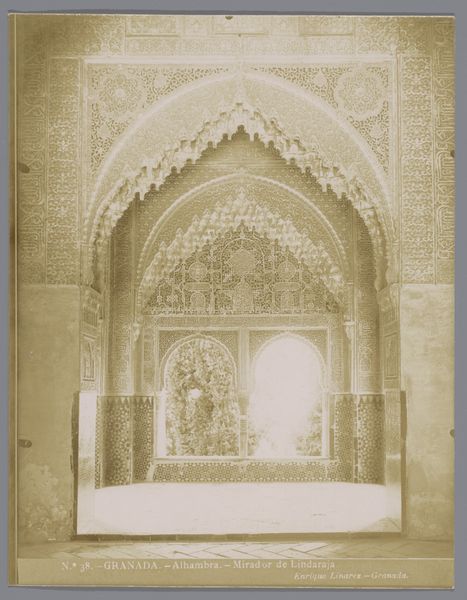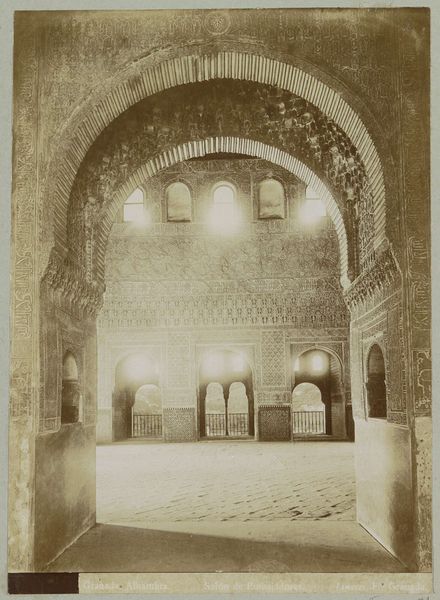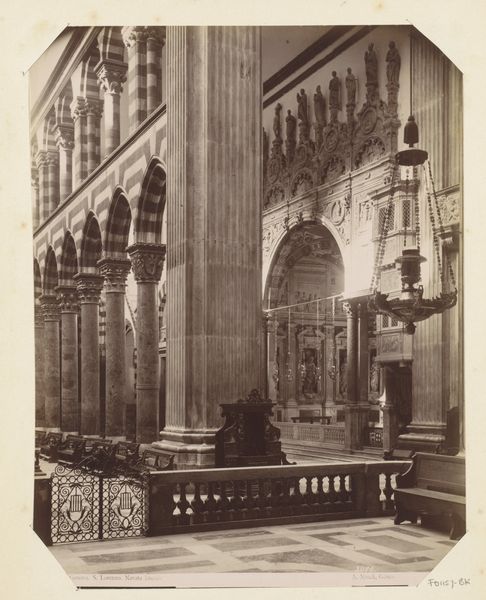
Leeuwenhof met de Leeuwenfontein in het Alhambra van Granada c. 1857 - 1880
0:00
0:00
juanlaurent
Rijksmuseum
photography, gelatin-silver-print, architecture
#
landscape
#
photography
#
column
#
gelatin-silver-print
#
19th century
#
islamic-art
#
architecture
Dimensions: height 338 mm, width 253 mm
Copyright: Rijks Museum: Open Domain
Curator: This gelatin-silver print, captured sometime between 1857 and 1880 by Juan Laurent, presents the Court of the Lions, a courtyard of the Alhambra in Granada. Editor: Immediately striking is the contrast between the intricate detailing above and the relatively smooth columns leading towards the light-filled center. It creates a sense of both enclosure and expansiveness. Curator: Indeed. And Laurent's choice of photography as a medium is significant. Consider the access it afforded to circulate imagery of Islamic art and architecture, challenging Orientalist fantasies even as it participated in them. This space, built by Muslims, was captured and consumed through a Western, photographic lens, making issues of power visible. Editor: Absolutely. The production of this photograph involves multiple stages: the gathering of materials, the transportation, the darkroom work itself, the development of the gelatin-silver print. Think of the labor embedded within the image, from the original artisans who carved the stone to the photographer in his darkroom! How many hands have touched the materials to create this print? Curator: Looking at the repetitive architectural patterns, I can't help but think about the gendered nature of space within the Alhambra. The courtyard may have served as a space for courtly spectacle, but also possibly as a private space accessible to women. Understanding its role reveals the intricacies of palace life and women’s lives within. Editor: It prompts questions about circulation and preservation. Was this intended as an artistic piece or as an artifact for record keeping? Photography democratized imagery but also industrialized documentation and influenced archival practice, with ripple effects across society. Curator: It’s important, though, to also view this photograph outside its ethnographic function. Beyond a historical document, it offers a profound aesthetic experience that asks questions about visibility and access within larger social and political frames. Editor: Exactly. By tracing the photographic process, we not only appreciate the technical skill involved, but are urged to recognize how photographic views impact the subject and culture displayed within it.
Comments
No comments
Be the first to comment and join the conversation on the ultimate creative platform.
